Healthcare IT 2016: Expectations for Budget Growth Decelerates; Confidence to Meet Demands Remains High
FEB. 22, 2016 | HANOVER, MD | For media inquiries, please contact us at media@TEKsystems.com.
Leading into HIMSS16, TEKsystems highlighted study findings that explore the current state of IT operations within healthcare organizations. The results identify key objectives and challenges for healthcare IT teams, the skills most needed to meet those demands, and expectations for spending and confidence. The data is gleaned from information captured in TEKsystems’ annual IT forecasts as reported by IT leaders (CIOs, IT VPs, IT directors, IT hiring managers) at healthcare organizations.
Key highlights from the survey include:
Expectations for Budget Increases Continue to Drop; Confidence in Ability to Meet Business Demands Continues to Rise
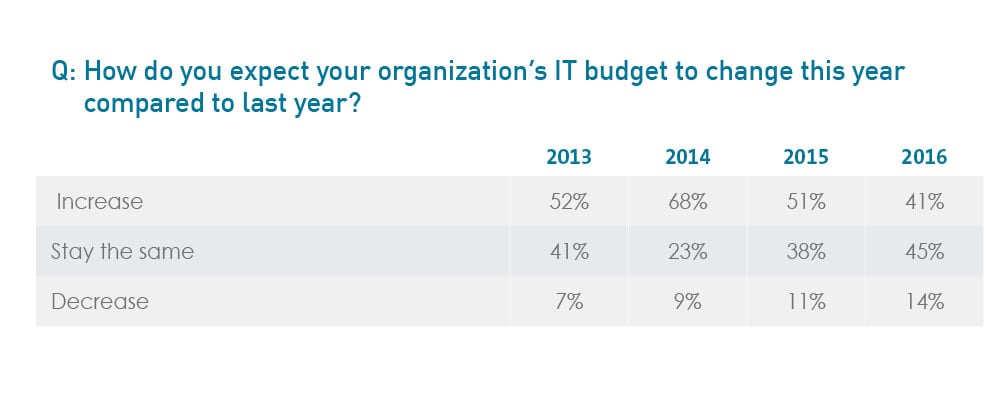
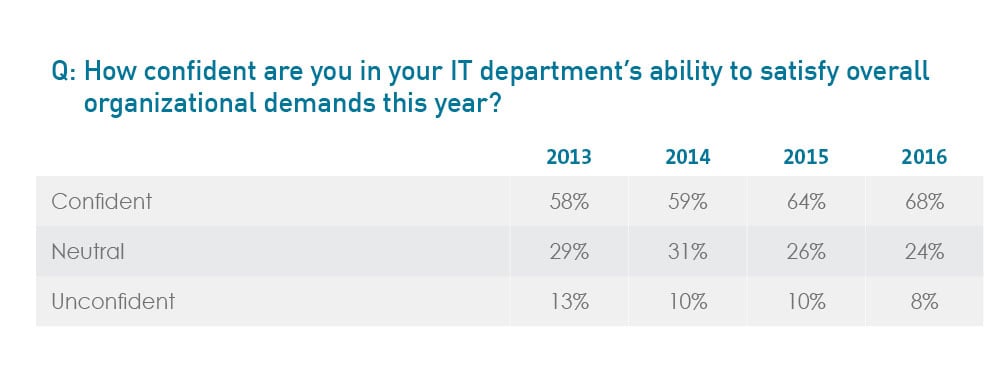
- TEKsystems’ Take: The percentage of healthcare IT leaders who expect budgets to increase is at its lowest level since TEKsystems’ first annual IT forecast survey for 2013. Despite this deceleration, nearly 7 out of 10 IT leaders express confidence in their ability to satisfy overall organizational IT demands. It appears that organizations have become increasingly comfortable in meeting ARRA, HITECH and EMR/EHR incentive targets as they have turned the corner on implementing these requirements.
IT Priorities Consistent Year to Year; Security, Mobility and Business Intelligence Critical to Mobile Health and Patient Engagement Efforts
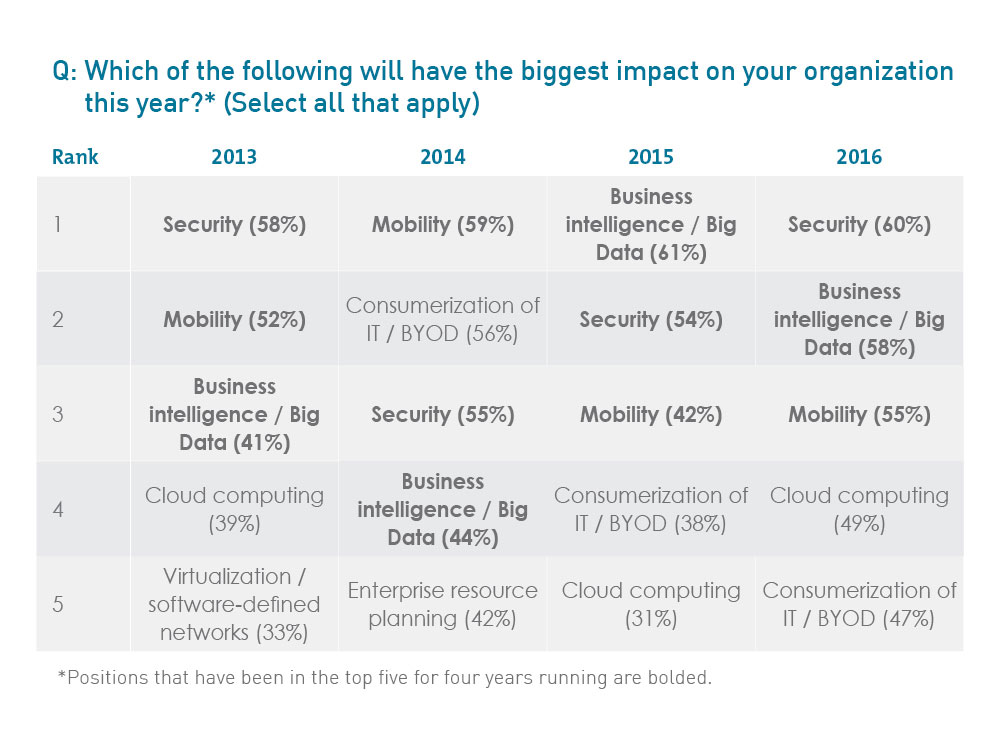
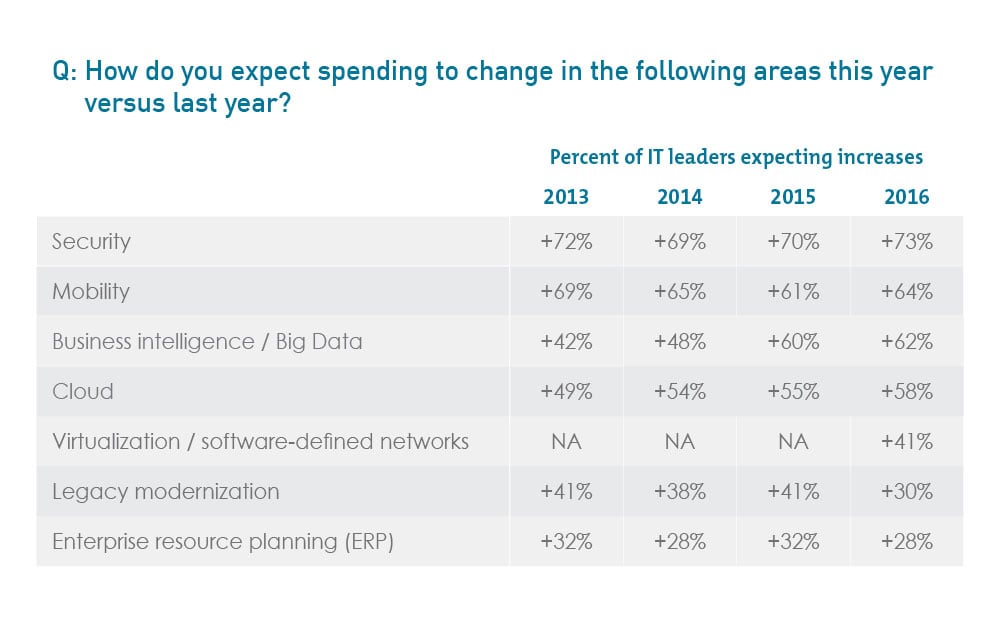
- TEKsystems’ Take: For the past four years, IT leaders listed security, mobility and business intelligence / Big Data among the top four areas impacting their organizations. The consistency of these impact areas explains why IT leaders’ confidence in supporting overall organizational IT demands continues to be strong. Initiatives related to mobile health and patient engagement are underlying drivers for continued spending in security, mobility and business intelligence, as wearables and the Internet of Things (IoT) begin to shift how providers care for their patients. Additionally, it appears spending in these areas is taking place to the detriment of areas that may have already reached maximum optimization (e.g., legacy modernization, ERP).
Project Managers Remain Critical; Security Leaps to Top as Hardest Role to Fill
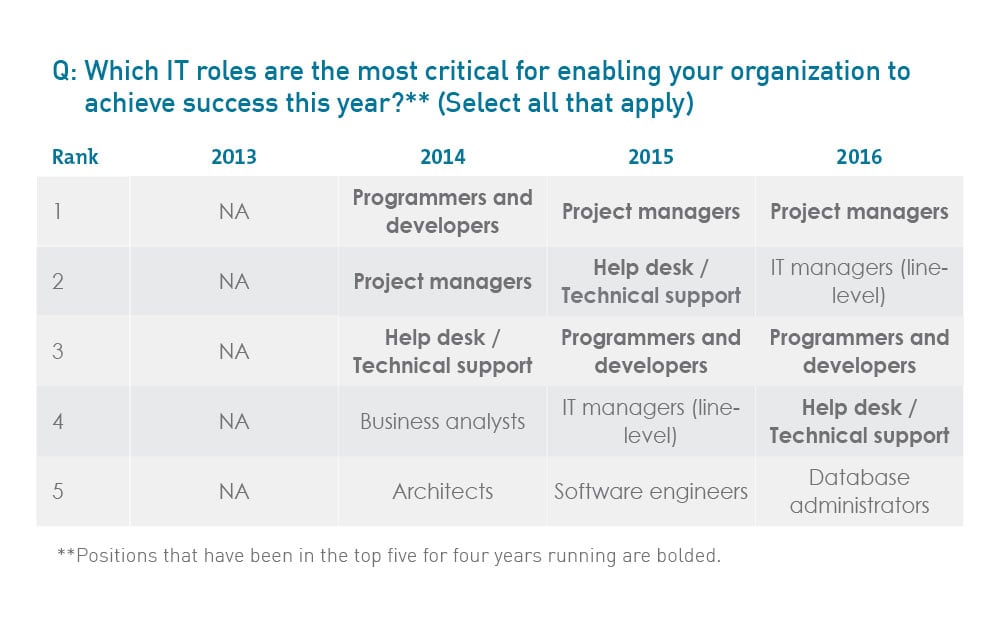
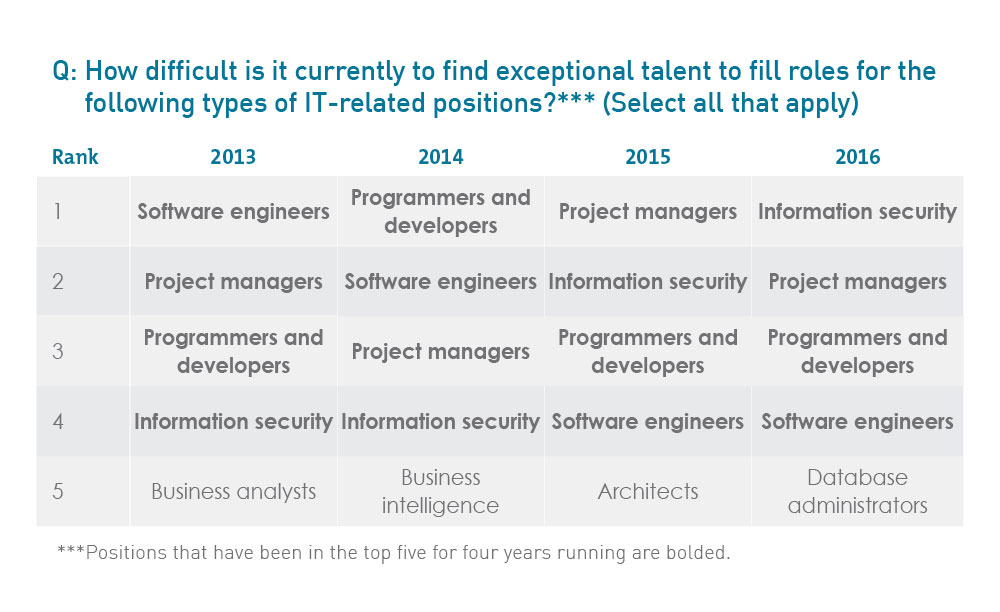
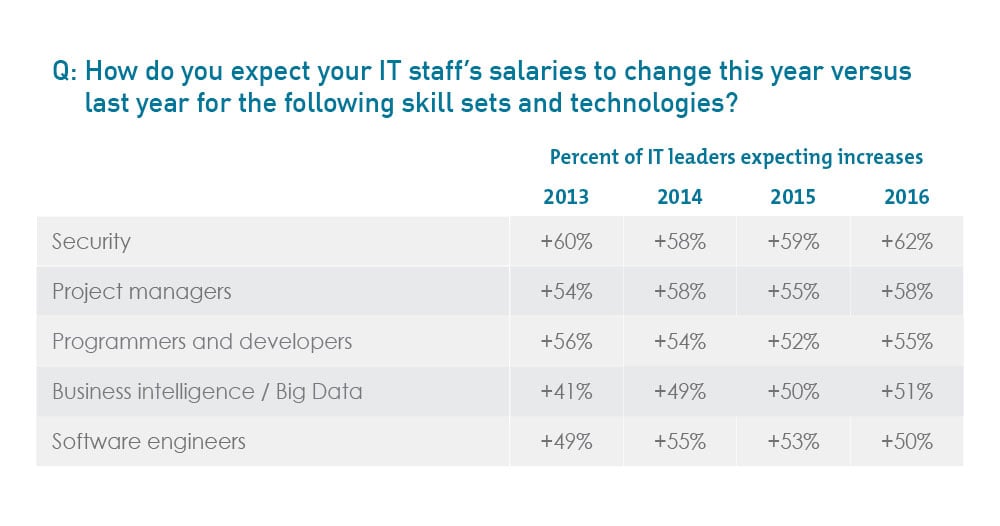
- TEKsystems’ Take: From 2013 to 2016, healthcare IT leaders have consistently agreed on the most critical skills and the most difficult positions to fill. While core builder positions (i.e., programmers and developers, software engineers) are both critical and difficult to fill, security—critical for all stages of a healthcare IT initiative—has continually increased in importance, and as a result, continues to maintain its priority as the area where the highest percentage of healthcare IT leaders are allocating salary increases.
Salaries, Staffing Levels and Staff Allocation Has Stabilized
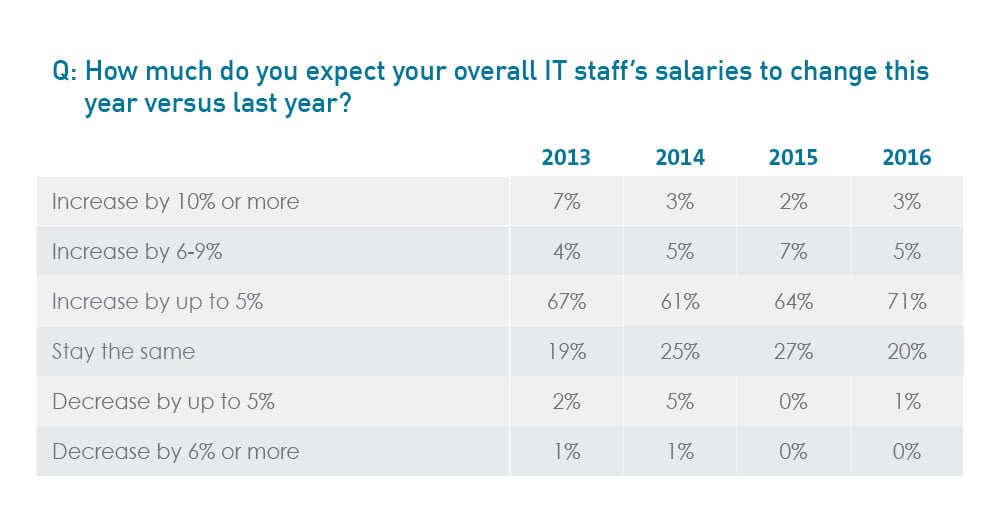
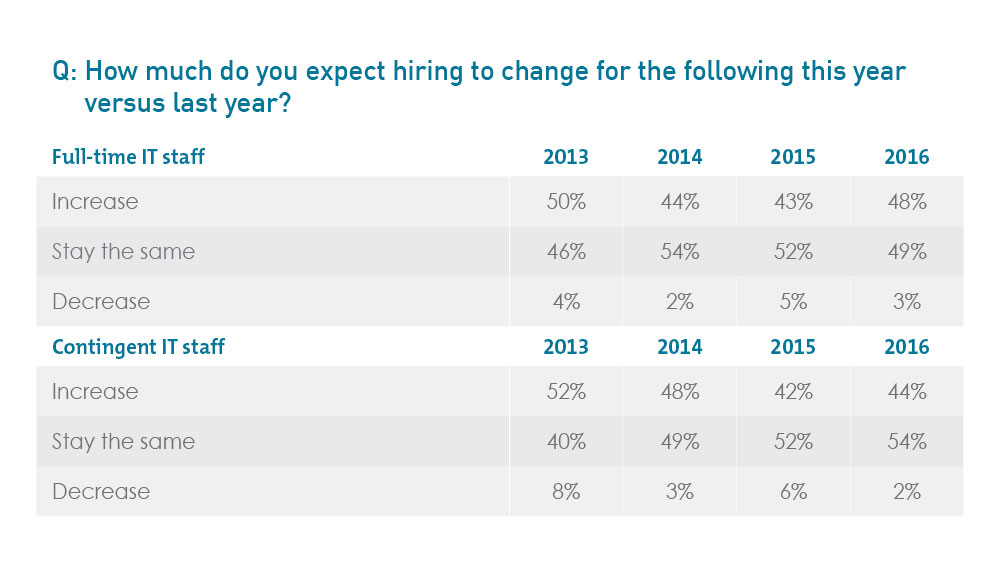

- TEKsystems’ Take: Average salary increases of up to 5 percent are expected, but only 3 percent of IT leaders expect salaries to increase by 10 percent or more. Hiring expectations are anticipated to increase slightly in 2016. All of these data points indicate that overall staffing is continuing to stabilize.
“The forecast results speak to the cyclical nature of IT investments healthcare organizations have undertaken over the past several years,” says Ryan Skains, executive director of TEKsystems Healthcare Services. “In 2014, regulatory changes drove spending up, but now healthcare leaders have grown past the threshold of building applications or interoperability coding and are looking to get a return on investment. Despite reports that there will be fewer budget increases this year, confidence is at a historical high. Healthcare IT leaders still have some big projects ahead—such as an industrywide move to mobile health and patient portals—yet seem poised to take them on. Hiring is stabilizing with slight increases expected, and salaries are expected to increase for skill sets that will be critical for this digital modernization.”
TEKsystems will be exhibiting at booth No. 6450 at HIMSS16, March 1–3, 2016, at the Sands Expo in Las Vegas.
TEKsystems’ Ryan Skains is available for additional commentary. For more information about the survey, or to schedule an interview, please contact Rick McLaughlin at TEKsystems@teamlewis.com.
About TEKsystems
People are at the heart of every successful business initiative. At TEKsystems, an Allegis Group company, we understand people. Every year we deploy more than 80,000 IT professionals at 6,000 client sites across North America, Europe and Asia. Our deep insights into IT human capital management enable us to help our clients achieve their business goals–while optimizing their IT workforce strategies. We provide IT staffing solutions and IT services to help our clients plan, build and run their critical business initiatives. Through our range of quality-focused delivery models, we meet our clients where they are, and take them where they want to go, the way they want to get there.